Introduction: Why This Margherita Sauce Recipe Deserves a Spot in Your Kitchen
There’s something about fresh, homemade Margherita sauce that instantly elevates a dish. Whether you call it Margherita or occasionally see it spelled as Margarita sauce, this tomato-based classic is more than just pizza topping. It’s a flavor-packed staple that can transform simple ingredients into something memorable.
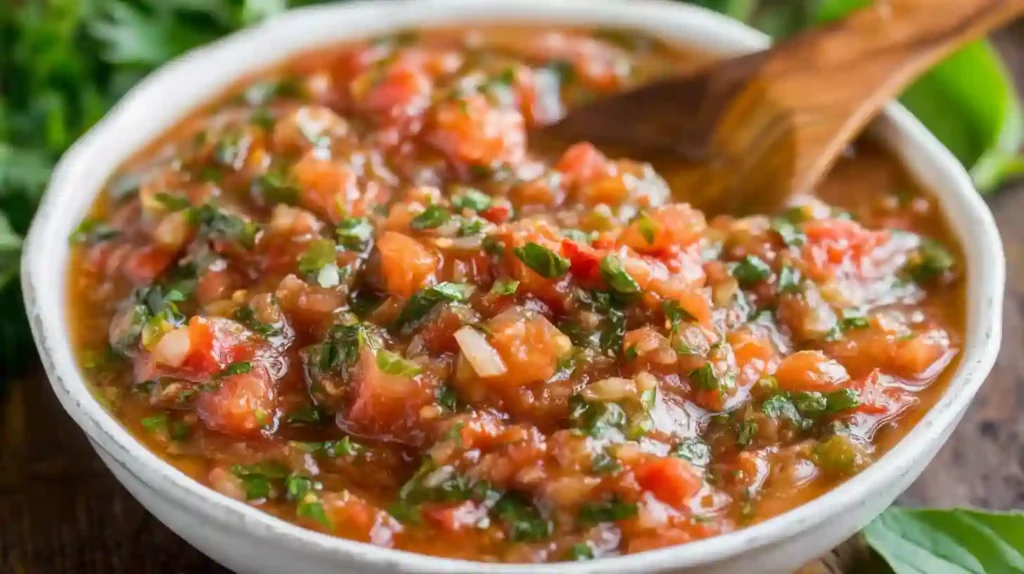
This Margherita sauce recipe has become a personal go-to, especially when summer tomatoes are at their peak. Inspired by a friend’s family tradition and passed down with love, it’s bold, aromatic, and deeply rooted in simplicity. Think ripe tomatoes, good olive oil, fresh basil, and just the right touch of garlic. It’s not just for pizza, though it absolutely shines on a Margherita pizza. Try it spooned over pasta, swirled into risotto, or layered on toasted bread. Some even refer to it as Pizza Margarita sauce, a nod to its Italian roots.
If you’ve been disappointed by store-bought pizza sauces that taste flat or overly sweet, this recipe will be a revelation. No additives. No shortcuts. Just real ingredients doing what they do best.
By the end of this recipe, you’ll know how to prepare the sauce from scratch, how to blanch and peel tomatoes like a pro, and why resting the sauce at room temperature is the magic step you didn’t know you needed.
Let’s get into the essentials and bring a touch of Italy into your kitchen.
Table of Contents
Ingredients for Authentic Margherita Pizza Sauce
Making a truly authentic Margherita pizza sauce starts with fresh, quality ingredients. This isn’t the time for shortcuts. The beauty of this sauce lies in its simplicity and purity. With just a handful of items, each one has to pull its weight in flavor and texture.
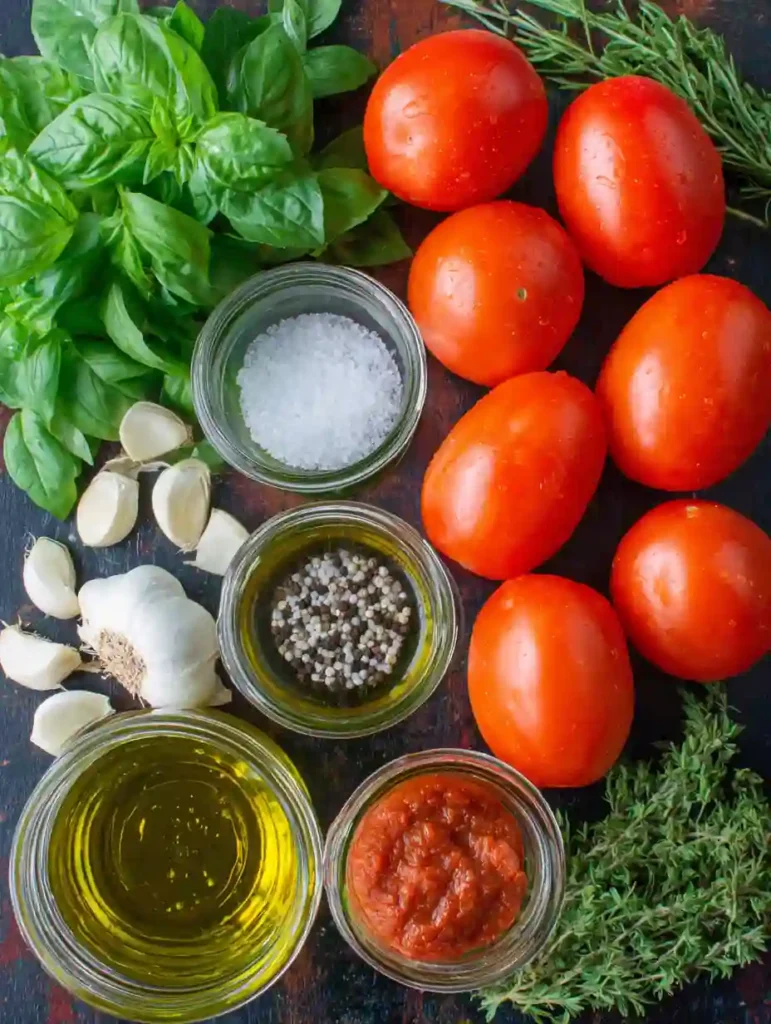
Here’s what you’ll need:
- Plum tomatoes
These are preferred for their meaty texture and low water content. Roma tomatoes are a great alternative if plum isn’t available. The key is using ripe, fresh tomatoes with a deep red color. - Extra virgin olive oil
Rich and slightly peppery, olive oil acts as both a flavor carrier and a key element in binding everything together. Use the best quality you can get your hands on. - Fresh basil
Torn or chopped, fresh basil adds that signature Italian aroma. Dried versions won’t deliver the same brightness or depth. - Flat-leaf parsley
It offers a gentle bitterness and balances the sweetness of the tomatoes. Skip curly parsley, which lacks the same flavor impact. - Garlic cloves
Fresh garlic brings intensity and warmth. If you’re using pre-minced garlic, the flavor will be milder, but it’s a usable substitute. - Salt and pepper
These aren’t just seasonings. Salt amplifies the natural tomato sweetness, while pepper adds subtle heat and character.
These ingredients combine to create a sauce that’s not only perfect for Margherita pizza but also adaptable for pasta, sandwiches, and grilled vegetables. It’s worth noting that some call this blend Margarita pizza sauce, but regardless of spelling, the flavor speaks for itself.
What makes plum tomatoes ideal for pizza sauce?
Plum tomatoes are dense with less water and fewer seeds, which makes the sauce thicker and more concentrated. This is especially useful when you want to avoid a watery pizza crust.
How to Make Classic Margherita Sauce at Home
Making Margherita sauce from scratch may seem intimidating at first, but it’s actually a calm, satisfying process. The key is to let the natural ingredients do the talking while you follow a few simple but important steps. This method brings out the depth and brightness of the tomatoes without any cooking on the stove.
Blanching and Peeling Tomatoes
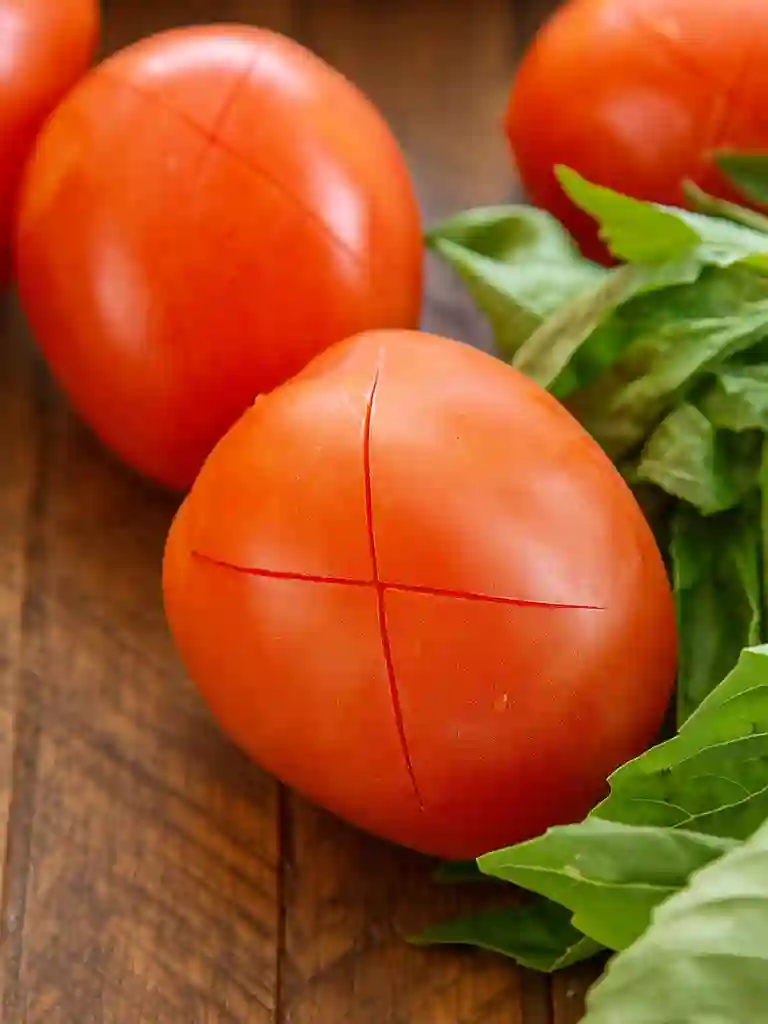
Start by scoring each tomato with a small “X” on the skin. This helps loosen the peel during blanching. Bring a large pot of water to a boil, then drop in five tomatoes at a time. Let them sit for about one to two minutes, just until the skins start to split. Use a slotted spoon to transfer them to a bowl to cool. Once cooled, peeling them is easy. The skins should slide right off.
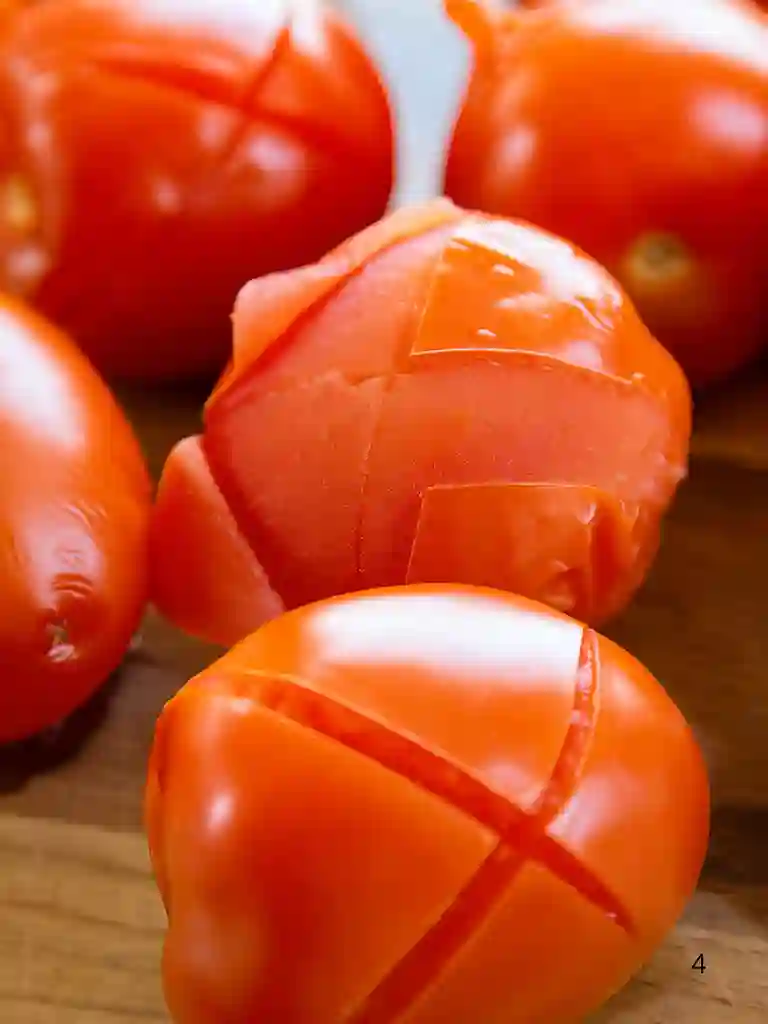
After peeling, dice the tomatoes and place them in a large bowl. Make sure to include the juices released during cutting, as they add essential flavor to the sauce.
Mixing the Margherita Sauce
To the diced tomatoes, add extra virgin olive oil, chopped fresh basil, parsley, minced garlic, salt, and pepper. Stir everything gently but thoroughly until fully combined.
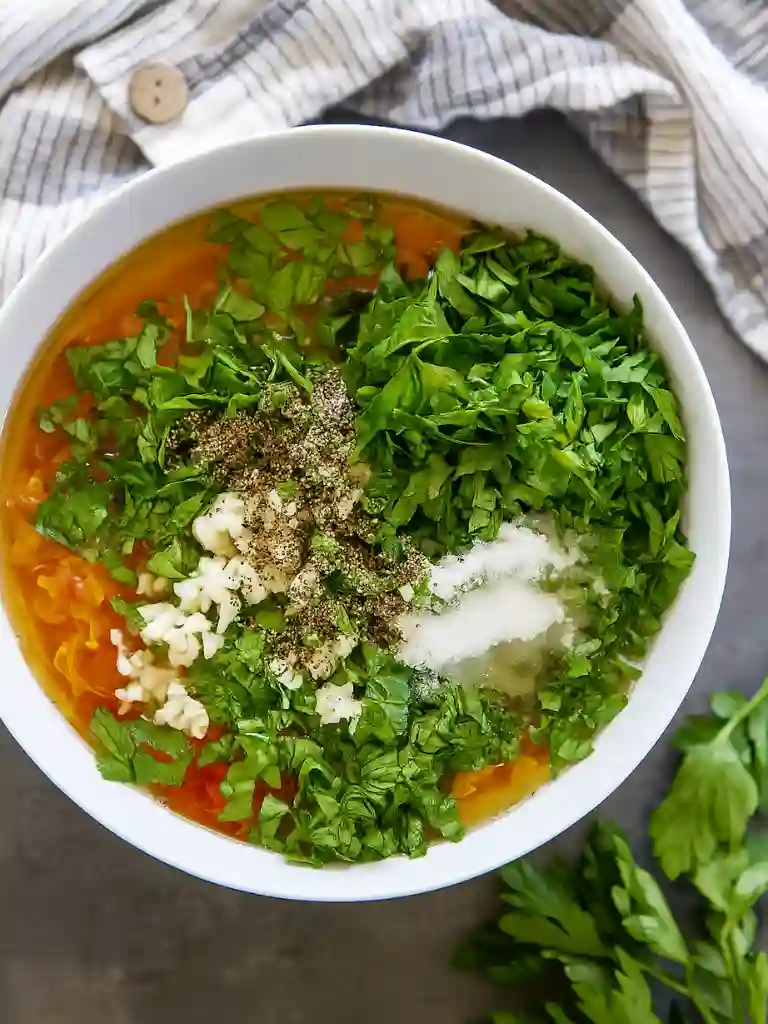
Now comes the unexpected step. Let the sauce sit uncovered at room temperature for at least three hours. This resting period is what lets the flavors bloom. It transforms the mixture from a bowl of raw ingredients into a beautifully balanced sauce. You might be tempted to skip it, but trust the process.
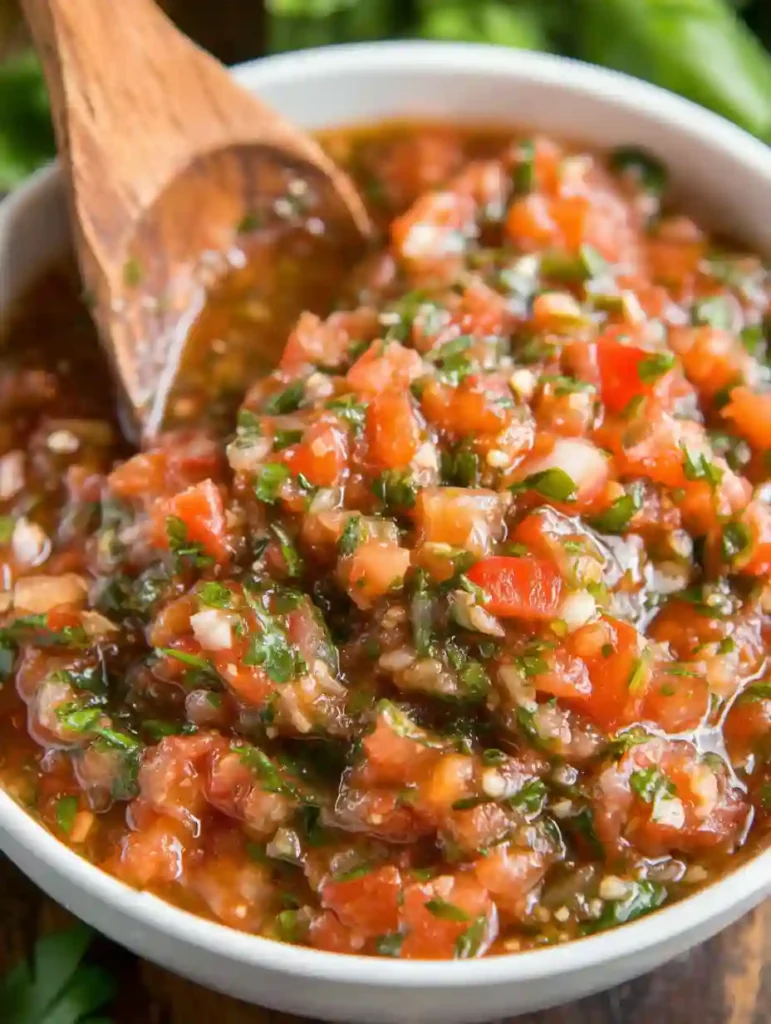
This no-cook method creates a fresh and vibrant sauce ideal for Margherita pizza or any dish that benefits from clean tomato flavor. Some home cooks even refer to this method as the easiest Margarita pizza sauce preparation. It’s rustic, real, and incredibly rewarding.
Can I use canned tomatoes instead of fresh?
Fresh tomatoes give the best flavor and texture for this sauce, but in a pinch, you can use high-quality canned whole plum tomatoes. Just be sure to drain the excess liquid and avoid pre-seasoned varieties.
Tips for the Best Margherita Sauce Flavor
Even with simple ingredients, there are a few small decisions that make a big difference in the final taste of your Margherita sauce. These tips will help you bring out the best in each component and avoid common mistakes that can dull the flavor or texture.
Let the Sauce Rest at Room Temperature
This is the golden rule. Once the ingredients are mixed, allow the sauce to sit uncovered at room temperature for at least three hours. This resting time allows the garlic to mellow, the basil to infuse, and the tomatoes to sweeten naturally. Skipping this step often results in a sauce that tastes flat or raw.
Use High-Quality Olive Oil
Not all olive oils are created equal. A good extra virgin olive oil should have a fruity aroma and a peppery finish. This will deepen the richness of the sauce and help carry the herbal notes across your palate. Avoid light or blended oils, which often lack depth.
Chop Herbs Just Before Using
Fresh basil and parsley lose their fragrance quickly after cutting. For the most intense aroma, chop your herbs right before you add them to the bowl. If possible, use a sharp knife instead of a food processor to avoid bruising the leaves.
Don’t Overdo the Garlic
Garlic adds heat and depth, but too much can dominate the sauce and overwhelm the tomatoes. Five cloves are ideal for this recipe, but if you prefer a gentler flavor, reduce the amount slightly or mince it more finely for better distribution.
Can I refrigerate the sauce before serving?
You can refrigerate it, but be aware that chilling will mute some of the flavors. If you store it in the fridge, let it come back to room temperature before using. This allows the olive oil to re-liquefy and the aromas to return.
Substitutions and Variations for Pizza Margarita Sauce
One of the joys of a homemade sauce like this is how flexible it can be. While the classic Margherita version sticks to tradition, you can easily adapt it to suit different diets, tastes, or pantry limitations without losing its essence.
Tomato Swaps
Plum or Roma tomatoes are ideal, but if you have cherry tomatoes or heirloom varieties on hand, those can work too. Just keep in mind that juicy or thin-skinned tomatoes may create a more watery sauce. In that case, strain out a bit of the liquid before mixing.
Make It Vegan-Friendly
The base recipe is already plant-based, but if you’re serving it with cheese or pizza, consider pairing with vegan mozzarella or a nut-based ricotta to keep the dish fully dairy-free. The sauce holds its own with or without cheese, which makes it ideal for vegan pizza night.
Add a Kick of Heat
If you like things a little spicy, finely dice one small chili or sprinkle in a pinch of red pepper flakes. The heat should stay in the background and enhance the tomatoes without overpowering them.
Use Dry Herbs in a Pinch
Fresh basil and parsley are best, but in the off-season, you can use dried herbs. Use one-third of the fresh quantity and crumble them between your fingers to release more aroma. The flavor will be slightly more earthy and less bright, but still satisfying.
Can I blend this sauce instead of keeping it chunky?
Yes, if you prefer a smoother texture, you can pulse the sauce in a food processor just a few times. Avoid over-blending, as it can make the texture too thin and emulsify the oil, which changes the mouthfeel. A quick blend gives it a rustic smoothness without losing character.
Ways to Use Margherita Sauce
This Margherita sauce is incredibly versatile. While it was born to top pizzas, especially the classic Margherita pizza, it pairs beautifully with a wide range of dishes. Once you taste how fresh and balanced it is, you’ll find yourself reaching for it far beyond pizza night.
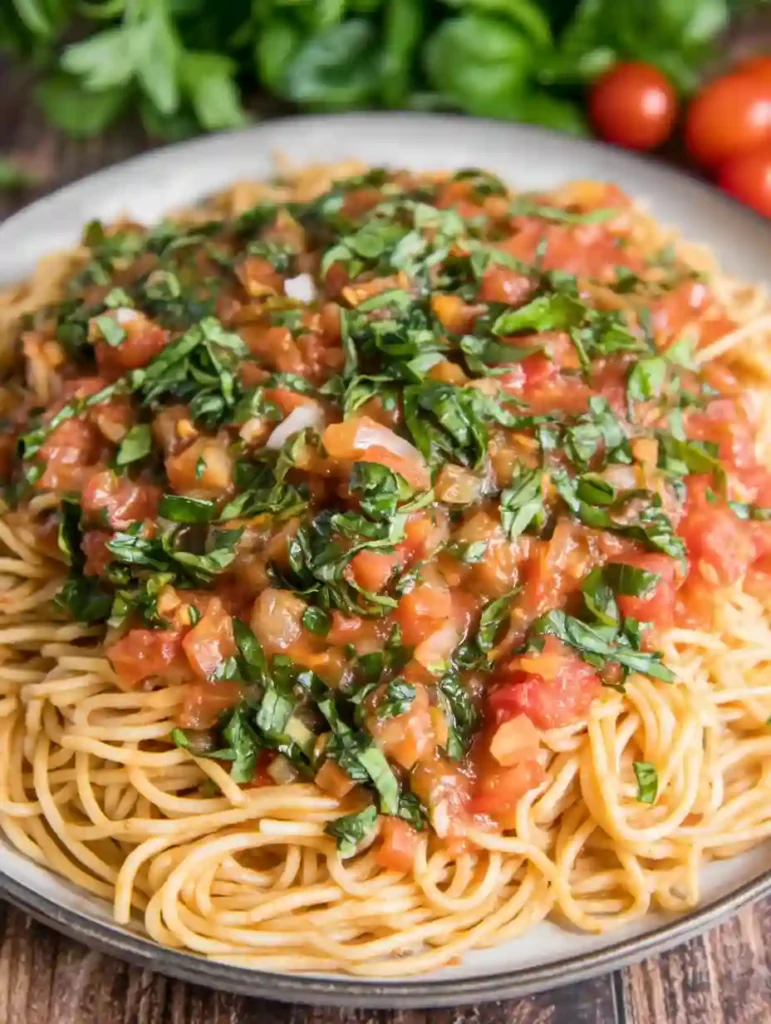
Make an Easy Margherita Pizza
Spread a generous layer of this sauce on your favorite pizza crust, top it with slices of fresh mozzarella and torn basil, then bake until bubbly and golden. This is the heart of a true Margherita pizza recipe, simple and unforgettable. If you’re looking for a quick weeknight version, use a pre-made crust or flatbread for a shortcut.
If you’re ready to turn this sauce into something truly special, try it on our easy homemade Margherita pizza Recipe. The fresh tomatoes, mozzarella, and basil come alive with every bite.
Pair with Homemade Pizza Crust
Whether you make your own dough or use a store-bought option, this sauce turns any crust into something special. The balance of acidity and sweetness makes it ideal for light, thin-crust styles where the toppings need to shine.
Toss with Pasta or Gnocchi
This sauce isn’t just for pizza. Toss it with hot pasta or pan-seared gnocchi for a fast and flavorful dinner. Add a sprinkle of Parmesan or fresh herbs for extra depth. It’s a great way to use up leftovers too.
Serve with Grilled Proteins or Vegetables
Use the sauce as a finishing touch for grilled chicken, fish, or vegetables. Spoon it over roasted eggplant or zucchini for a summery side dish. It also works as a cold dip for crusty bread or toasted baguette slices.
What is the difference between Margherita and Margarita pizza sauce?
The ingredients are usually the same, but the spelling differs. Margherita is the correct Italian name for the classic pizza made with tomato, mozzarella, and basil. Margarita is often a misspelling or regional variation. Both refer to the same style, but for authenticity, Margherita is the right choice.
Frequently Asked Questions about Margherita Sauce
Understanding the finer details of Margherita sauce can help you get the most from this simple yet powerful recipe. Here are answers to some common questions that come up when people make it at home for the first time.
Can I freeze Margherita sauce?
Yes, you can freeze this sauce. Let it cool completely, then transfer it to a sealed container or freezer bag. It will keep well for up to three months. Thaw it in the refrigerator and let it come to room temperature before serving to preserve its texture and flavor.
How long does it last in the refrigerator?
Stored in an airtight container, the sauce will last in the fridge for about five days. Because it contains fresh ingredients and no preservatives, it is best enjoyed within that time frame.
Can I use canned tomatoes instead of fresh?
Fresh tomatoes give the best flavor, but if they are out of season or unavailable, high-quality canned plum tomatoes are a good substitute. Look for ones without added herbs or sugar and drain them slightly before using.
Is Margherita sauce the same as pizza sauce?
They are similar, but not always the same. Traditional pizza sauces are often cooked and thicker in texture. Margherita sauce, on the other hand, is fresh and uncooked, making it ideal for lighter, more delicate pizzas like the classic Margherita pizza.
Why is it sometimes called Margarita pizza sauce?
This is usually a spelling error or a regional difference. The correct name is Margherita, which honors Queen Margherita of Italy. Despite the mix-up, both versions generally refer to the same style of sauce used for pizza.
Nutrition Information for Margherita Pizza Sauce
While Margherita sauce is known for its bold flavors and fresh ingredients, it is also a healthy option for anyone watching their intake of added sugars, preservatives, or processed ingredients. Here’s a breakdown of the nutrition in one serving, based on a ten-serving batch.
- Calories: 308
- Total Fat: 33 grams
- Saturated Fat: 5 grams
- Carbohydrates: 4 grams
- Sugars: 2 grams
- Dietary Fiber: 1 gram
- Protein: 1 gram
- Sodium: 472 milligrams
- Potassium: 253 milligrams
- Vitamin A: 1155 IU
- Vitamin C: 18 milligrams
- Calcium: 22 milligrams
- Iron: 1 milligram
These values reflect a sauce made primarily from olive oil and tomatoes, which contributes to the higher fat content. However, most of that fat comes from healthy unsaturated sources. The sauce is naturally gluten-free, vegan, and low in carbohydrates.
Is Margherita sauce a good choice for low-carb or keto diets?
Yes, it fits well within most low-carb eating plans. With only four grams of carbs per serving and no added sugar, it is a flavorful way to dress up vegetables, proteins, or low-carb pizza crusts.

Conclusion and Call to Action
Making Margherita sauce at home is more than just a kitchen task. It is a small act of care that brings fresh flavor to your table and connects you to a tradition rooted in simplicity. With just tomatoes, herbs, olive oil, and garlic, you can create something that feels both rustic and refined.
Whether you spread it on a homemade pizza crust, swirl it into hot pasta, or serve it with grilled vegetables, this sauce adapts to your cravings. It is a staple worth learning once and keeping in rotation forever.
If you try this recipe, share your version. Add your twist. Let it rest on the counter while the aroma fills the room. Then take that first bite and remember why real food, made simply, often tastes the best.
Feel free to leave a comment below, print the recipe for later, or send it to someone who needs a little homemade inspiration.
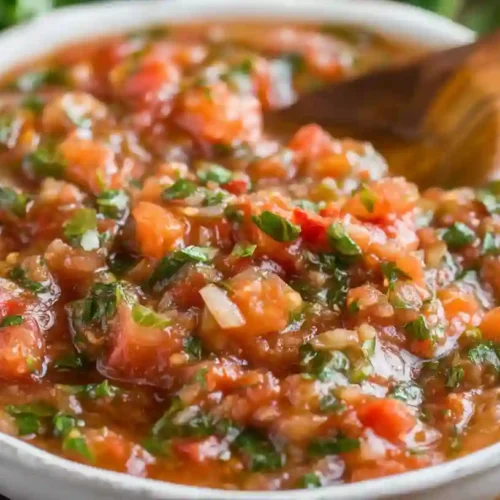
Margherita Sauce
Equipment
- Large pot
- Mixing bowl
- Slotted Spoon
- Sharp knife
Ingredients
Main Ingredients
- 15 Plum tomatoes or Roma tomatoes
- 1.5 cups Extra virgin olive oil
- 1 cup Fresh basil chopped
- 0.5 cup Flat-leaf parsley chopped
- 2 teaspoons Salt
- 1 teaspoon Black pepper
- 5 cloves Garlic minced
Instructions
- Bring a large pot of water to a boil. Score the tomatoes with an X on the skin to make peeling easier.
- Blanch 5 tomatoes at a time for 1 to 2 minutes until the skin begins to peel. Remove with a slotted spoon and let cool.
- Peel all the tomatoes and dice them. Place in a large mixing bowl along with the juices.
- Add olive oil, chopped basil, parsley, garlic, salt, and pepper to the tomatoes. Mix until fully combined.
- Let the sauce rest uncovered at room temperature for 3 to 4 hours to allow flavors to develop.
- Serve immediately or store in the refrigerator for up to 5 days.
Notes
- Calories: 308
- Total Fat: 33 grams
- Saturated Fat: 5 grams
- Carbohydrates: 4 grams
- Sugars: 2 grams
- Dietary Fiber: 1 gram
- Protein: 1 gram
- Sodium: 472 milligrams
- Potassium: 253 milligrams
- Vitamin A: 1155 IU
- Vitamin C: 18 milligrams
- Calcium: 22 milligrams
- Iron: 1 milligram
For more creative cooking & baking inspiration ideas, explore the Pinterest or connect with us on Facebook.


